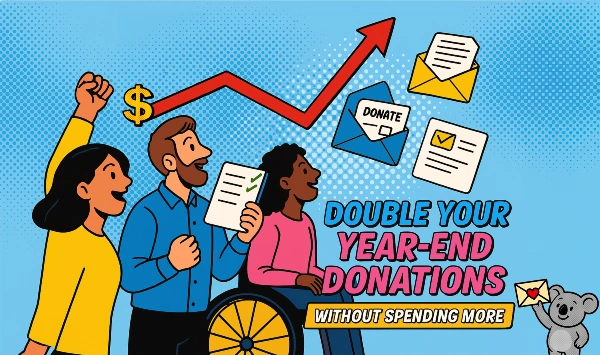What’s the best way to get donations from people under 40 years old?
Wait until they are over 40.
No, I’m not making a joke.
With rare exceptions, people under 40 are not a priority for fundraising approaches. They are hard to find, harder to persuade to give, and extremely hard to keep as ongoing donors.
Even face to face (street fundraising), which is squarely aimed at Gen X donors, finds that older Gen X donors give more than their younger Gen X peers. That is, 45-year-olds give meaningfully more than 35-year-olds, and they stay with their organisation longer.
You’ve probably heard the belief that we should acquire donors while they are young — because that will make them more likely to support us when they get older. That’s not entirely flawed. But if you just step back and think about it logically, it doesn’t quite hold together.
Say it costs $50 to acquire a new donor, regardless of age. (Actually, younger donors cost more to acquire, because they’re less responsive. But we’ll put that aside for now.) The older donors you get will be worth more in almost every possible way. They’ll have:
- Higher average donation
- Higher second gift rate
- Higher retention (especially in monthly giving)
- Higher amounts raised (in events)
- Higher chance of supporting an event again
- Higher lifetime value
- Higher chance of putting you in their will… and a very much higher chance of realising that legacy sooner
- Higher chance of becoming a major donor
- Higher chance of responding to most of your communications
Now if you’re thinking, “We’ll just keep those younger donors until they age into the higher value category.” It won’t happen. Donors simply don’t stay with charities for multiple decades. Even older donors have a typical life-cycle with any given organisation of 7 to 10 years. Younger donors much less.
So the “get them young” plan goes like this:
- Spend more up-front to get them.
- Get less revenue from them.
- Lose them sooner.
- Then re-acquire them about 20 years later when they age into typical donor age.
It’s a terrible deal! Skip the first three steps and go right to the fourth one.
However, that does not mean you shouldn’t communicate with younger people.
Think of it this way: Older people almost certainly donated more in the Ice Bucket Challenge of a couple of years ago than did younger people – even though there were likely fewer of them giving. But those older donors would never have known about the Challenge if it weren’t for all that fervent sharing by millennials.
Millennials can also show up at events in large numbers, and essentially be your “foot soldiers” when you want to get a lot of publicity. They just don’t consistently make the kind of donors we need.
This seems to apply in most countries, but just recently I was shown data on public fundraising in China. About 50% of the donations through Chinese social media platform, WeChat, came from 27-37 year olds.
This opens a new question for us all: in emerging fundraising countries, like China, will what we think of as fundraising ‘facts’ remain the same!?
Please share your experience with young donors by leaving your reply below. We’d love to learn from your experience.











